MSI A88XM-E35 Motherboard Review: Micro-A88X for $68
by Ian Cutress on April 3, 2014 11:59 AM ESTScientific and Synthetic Benchmarks
2D to 3D Rendering –Agisoft PhotoScan v1.0: link
Agisoft Photoscan creates 3D models from 2D images, a process which is very computationally expensive. The algorithm is split into four distinct phases, and different phases of the model reconstruction require either fast memory, fast IPC, more cores, or even OpenCL compute devices to hand. Agisoft supplied us with a special version of the software to script the process, where we take 50 images of a stately home and convert it into a medium quality model. This benchmark typically takes around 15-20 minutes on a high end PC on the CPU alone, with GPUs reducing the time.
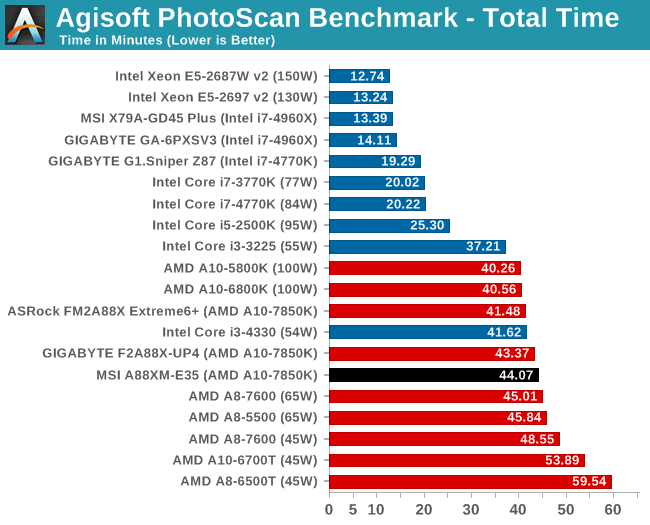
Console Emulation –Dolphin Benchmark: link
At the start of 2014 I was emailed with a link to a new emulation benchmark based on the Dolphin Emulator. The issue with emulators tends to be two-fold: game licensing and raw CPU power required for the emulation. As a result, many emulators are often bound by single thread CPU performance, and general reports tended to suggest that Haswell provided a significant post to emulator performance. This benchmark runs a Wii program that raytraces a complex 3D scene inside the Dolphin Wii emulator. Performance on this benchmark is a good proxy of the speed of Dolphin CPU emulation, which is an intensive single core task using most aspects of a CPU. Results are given in minutes, where the Wii itself scores 17.53; meaning that anything above this is faster than an actual Wii for processing Wii code, albeit emulated.
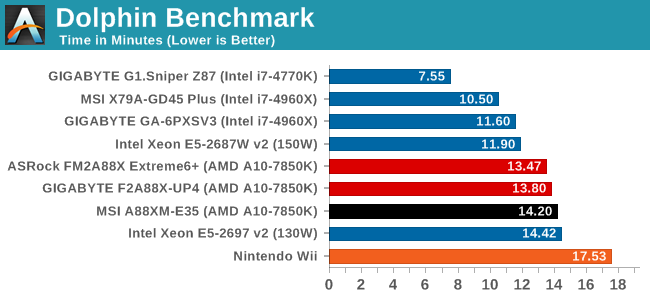
Point Calculations – 3D Movement Algorithm Test: link
3DPM is a self-penned benchmark, taking basic 3D movement algorithms used in Brownian Motion simulations and testing them for speed. High floating point performance, MHz and IPC wins in the single thread version, whereas the multithread version has to handle the threads and loves more cores.
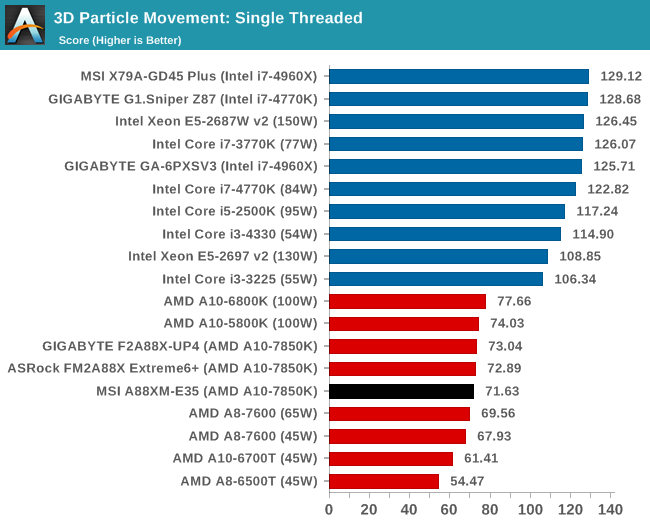

Encryption –TrueCrypt v0.7.1a: link
TrueCrypt is an off the shelf open source encryption tool for files and folders. For our test we run the benchmark mode using a 1GB buffer and take the mean result from AES encryption.
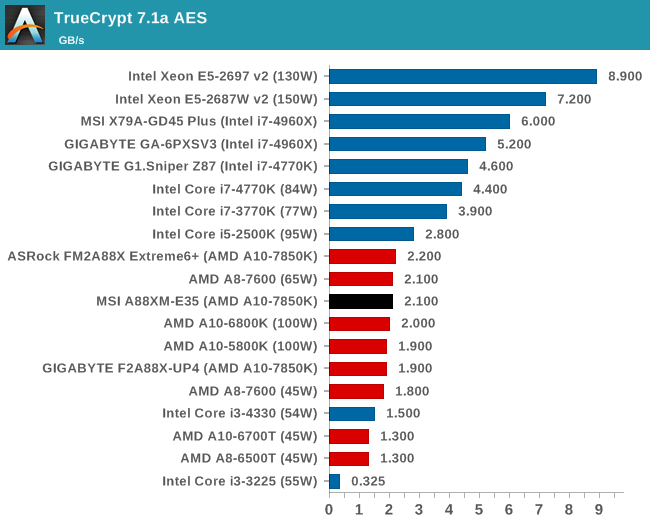
Synthetic – 7-Zip 9.2: link
As an open source compression tool, 7-Zip is a popular tool for making sets of files easier to handle and transfer. The software offers up its own benchmark, to which we report the result.
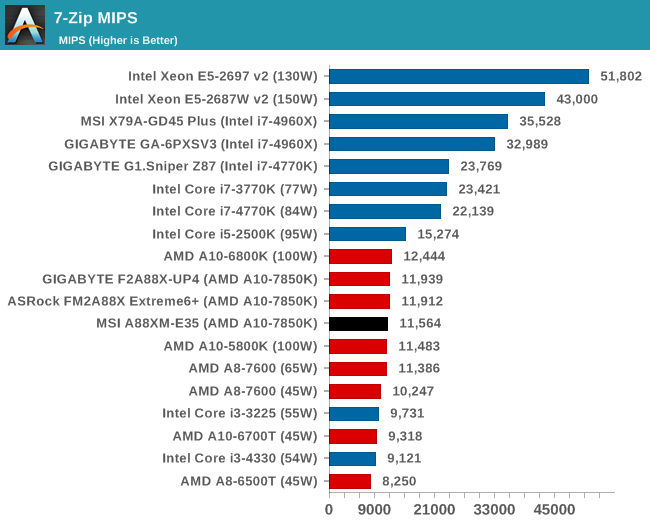










27 Comments
View All Comments
Demiurge - Thursday, April 3, 2014 - link
Good review. I am looking forward to mini-ITX board reviews in the future (hopefully there are some coming)... This is exactly what needs to be analyzed in this class of reviews. This flaw is a good find that an OEM may be aware of, but a retail customer would discover it through a negative experience.Myrandex - Thursday, April 3, 2014 - link
Look into the Gigabyte Mini ITX model. They reviewed it here on Anandtech but I have built a nice SFF system for a customer of mine using that and it was a great experience.Demiurge - Saturday, April 5, 2014 - link
Thanks, Myrandex!extremesheep49 - Thursday, April 3, 2014 - link
Can you elaborate on why this "power delivery" issue would or could happen or post a link to somewhere that discusses the issue? It seems odd to me that replacing a higher power chip (100W Richland) with a lower power chip (65W or 95W Kaveri) would create a heat generation issue.Is it a flaw in the Kaveri chip or just a different design which taxes the motherboard differently? If it's a flaw in the Kaveri design, is it something likely to be fixed by before Carrizo or is just a minor glitch to be fixed by a revision?
I'm just trying to understand the issue you are commenting on.
The_Assimilator - Thursday, April 3, 2014 - link
Considering you can buy a Z77 motherboard with minimal heatsinks on the power delivery circuitry (Z77-D3H comes to mind) that will happily run a 95W Sandy Bridge CPU at a 4GHz overclock without extra cooling, this is very concerning. It sounds to me like either AMD or board manufacturers are cheaping out on power delivery, or AMD has (yet again) engineered a turkey. Would appreciate if AnandTech could investigate and get to the bottom of this.jtd871 - Thursday, April 3, 2014 - link
A few comments:On the Conclusion page, "Performance is consummate with other FM2+..." - the word should probably be "commensurate".
I realize that many will go for the high-end Kaveri APU, but is the power delivery on the current crop of A88X boards really intended (or just better-suited) for the 45W/65W parts instead?
Per the comment on the opening page, I've been thinking about buying/building a Thin-ITX/NUC/Brix-sized system for general home use, and Kaveri (or maybe the next generation) seems to augur well for being able to do this at a modest power (and cooling) budget. Vendors will really have to get the cooling solutions sorted out, though.
lurker22 - Thursday, April 3, 2014 - link
Gotta wonder why Ps2 ports in 2014?sfuzzz - Thursday, April 3, 2014 - link
N-key rolloverFlunk - Thursday, April 3, 2014 - link
I don't think people buying $80 motherboards are generally concerned with USBs 6-key rollover limit seeing as keyboards that support more than 6-key rollover are generally more than $100.Flunk - Thursday, April 3, 2014 - link
The real reason is probably because PS2 ports are cheap and the chipset only supports so many USB ports.